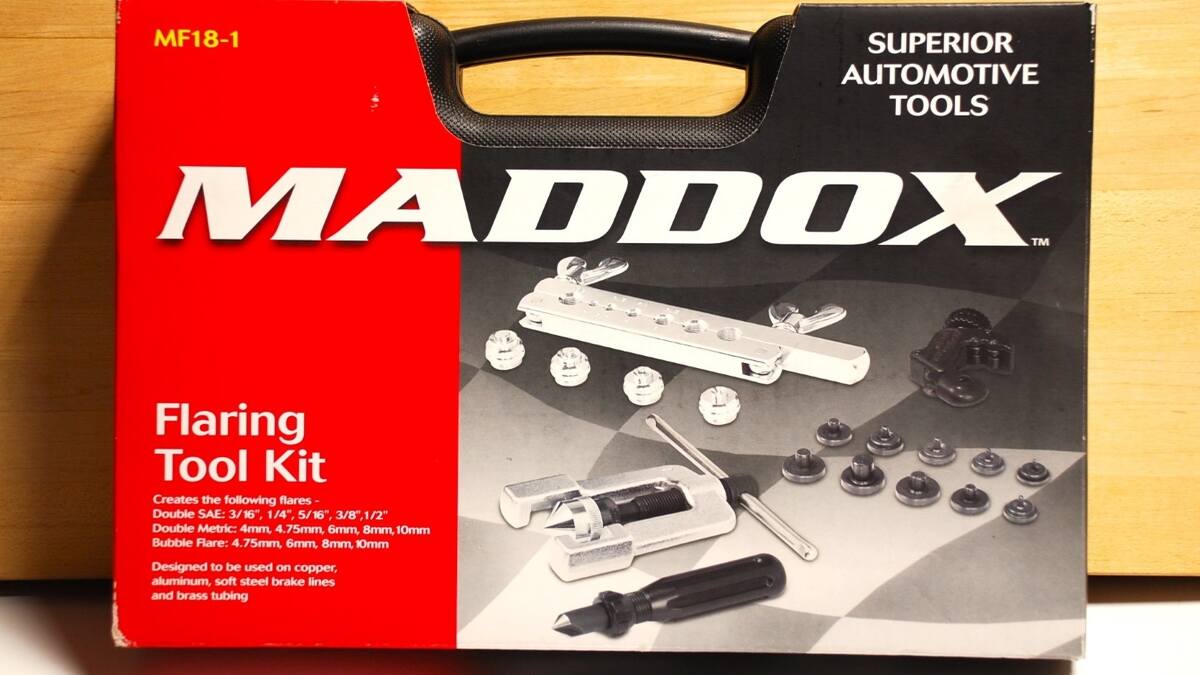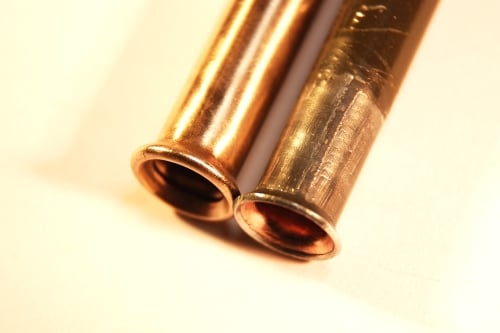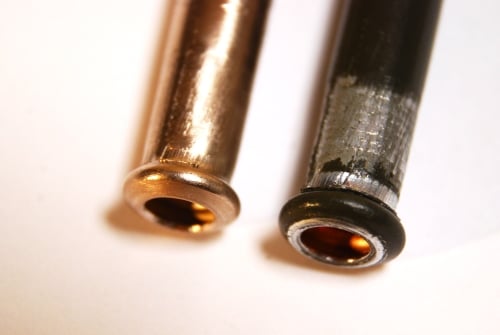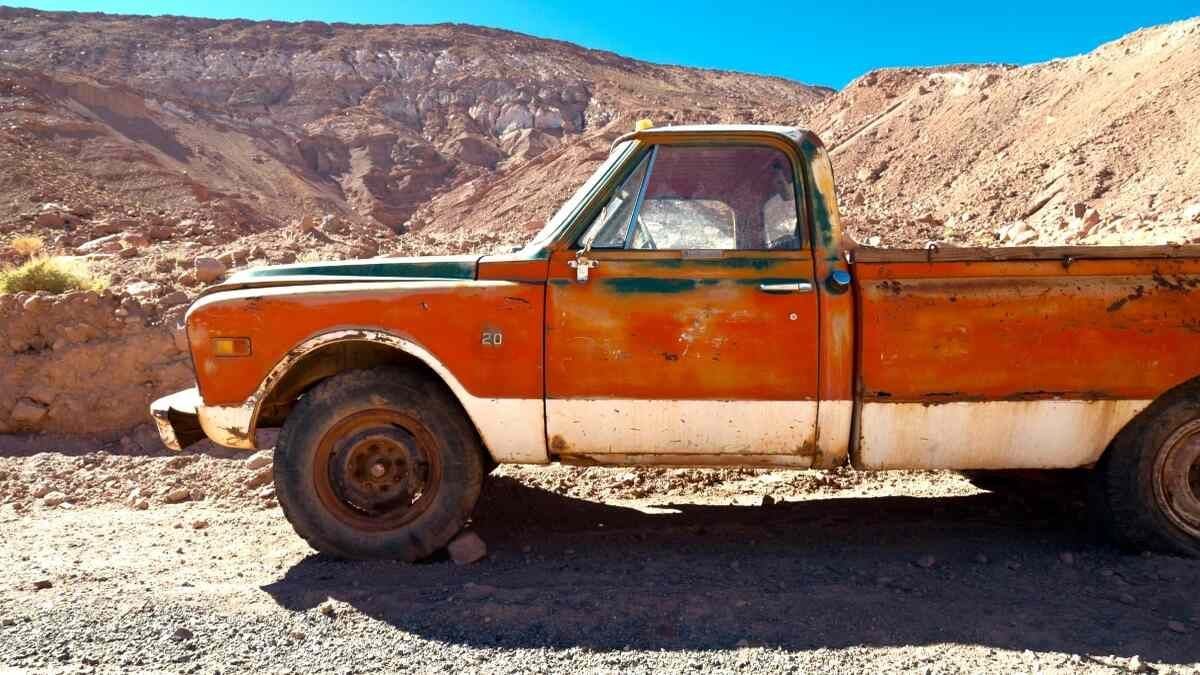For many used vehicle owners―unless rust has extended badly enough toward becoming a body/frame separation issue or resulted in a suspension system problem―the patina on their old car or truck body is a badge of honor and a testament to its age and endurance.
In fact, it is not unusual today to find a car that has an artificial painted-on patina, or even possess a protective clear coat over a real patina to capture the aesthetic moment of the vehicle.
Is a Rusty Car a Problem Car?
Finding a used car with some rust on it is not always indicative that it will be a problem car for you. If a car comes from the Rust Belt Region of the U.S., however, you will want to give it a close undercarriage inspection before buying.
What is the Rust Belt Region?
Oddly enough, the definition of “Rust Belt Region” has morphed somewhat from its original economic label to that of including the labeling of cars and trucks known for their exposure to exceptionally bad rust conditions due to the harsh winters in the Midwest and Northeast regions where the sheer volume of road salt overwhelms even the best made cars of steel.
According to the Encyclopedia Britannica:
Rust Belt―Geographic region of the United States that was long the country’s manufacturing, steelmaking, and coal-producing heartland but that underwent dramatic industrial decline that resulted in widespread unemployment, increased poverty, decay, and population loss. Because the Rust Belt is defined by similar economic experience rather than by natural borders, its boundaries are debated; however, it is generally viewed as encompassing a large part of the Midwest (Indiana, Illinois, Michigan, Missouri, Ohio, and Wisconsin) along with Pennsylvania, West Virginia, and portions of New York.
In other words, cars from the Rust Belt are synonymous with economic and physical decay…and can be a problem.
When is a Rusty Car a Problem?
Rust on a car becomes a serious problem when it compromises the structural integrity or safety of the vehicle. Signs and symptoms that rust can become a serious issue include:
- Visible Holes: If rust has eaten away at the metal to the point where there are visible holes in the body or frame of the car, it's a serious problem.
- Structural Weakness: Rust can weaken the structural integrity of the vehicle, especially in critical areas like the frame or suspension components. If you notice sagging or misalignment of parts, it could be a sign of structural weakness due to rust.
- Undercarriage Rust: Rust on the undercarriage of the vehicle, especially on important components like the exhaust system or subframe, can indicate a serious problem.
- Vehicle Safety: Rust can affect safety features such as airbag deployment or seatbelt functionality if it compromises the integrity of the vehicle's structure. In some jurisdictions, a vehicle with excessive rust may not pass safety inspections or may be deemed unfit for the road, leading to legal issues for the owner.
The Rust Spots Most Missed During a Prepurchase Inspection
If I had to pick out the most missed (and important) rust spot check during a used car prepurchase inspection, I would point out that questionable rusty brake lines and fuel lines are missed too often.
Most of the time during an inspection, the focus is on the underside of the body and the frame. The general rule of thumb is that if a strong magnet placed on the metal only removes a little oxidized metal rust it is good to pass. However, if metal flakes are coming off with the magnet, then the frame and body merit a closer inspection.
This focus, however, sometimes becomes myopic with respect to the all-important brake lines and fuel lines: Rust on either line can lead to leaks, which can compromise braking performance or pose a fire hazard, respectively.
Common Tool Used for Repairing Rusted Brake and Fuel Lines
One of the most common tools for the DIY car repair mechanic is a metal tube flaring tool.
A flaring tool is used to create either double flared ends or bubble flared ends to achieve a good tight seal between one end of the metal line and another metal component; or an end that prevents a rubber tube from slipping off the other end of the metal line, respectively.
However, there are other combinations of flared and bubble ends depending on the type of connections needed to ensure leak-free integrity.
How to Create a Flare or Bubble End on Fuel and Brake Lines
To give you an idea of what a flared end and a bubble end look like and how they are made with simple tools, here is a very good (albeit slow) demonstration of how it is done using one type of older style flaring tool that is still applicable today and teaches the finer details of making a good flare or bubble end.
How to Make Double and Bubble flares
The Harbor Freight Flaring Tool Set
A more modern version of a tube flaring tool is that of the MADDOX Deluxe Flaring Tool Kit available through Harbor Freight for $64.99. The value of this flaring tool set is not only its low price for what it does but the fact that it is durable and does the job.
The tool set pluses include:
- Creates single 45°, double 45° and bubble type flares
- Alloy steel chrome swivel reduces friction
- Includes flaring bar, arbor press, adapters, tubing cutter, deburring tool
- Designed for copper, aluminum, soft steel brake lines and brass tubing.
- Packaged in durable, impact resistant case

The tool set negative is that the instructions could be better and provided in a manual rather than pasted on an abbreviated instruction sheet on the inside of the box lid.
Recently I used the HF tool set for creating a new fuel line for an old truck using a commercial nickel-copper (Ni-Copp) metal line sold in automotive parts stores to replace the old original steel line that was not a good fit for a new Holley carb I wanted to install.
Ni-Copp is fine for fuel and brake line replacement due to it is slightly softer than steel line, making it more bendable but still strong enough for safe use. Copper is a bad idea due to it is too soft and the flares will sometimes crack.
A Warning About Fuel Lines
It bears mentioning that before picking up a commercial fuel line from an auto parts store is that you have to be sure its specs meet the vehicle’s requirement.
In short, fuel lines are available in a wide range of rubber and metal formulations, all of which are designed for either low-pressure or high-pressure use. Furthermore, although you will commonly see sections of rubber tubing filling a gap between metal lines, there are rules for just how long a rubber tube section can be.
A Common Fuel Line Mistake Warning
I’ve seen this too many times―old cars and trucks where someone used a rubber vacuum tube line as a fuel line. DON’T DO THIS! Rubber vacuum lines and fuel lines are very different. Sometimes you can tell the two apart by looking at a cross section of the tube and see the braided support lines in a fuel line that a vacuum line will not have. However, it is best to use rubber lines (in short sections) that have “fuel line” stamped on the tube to be sure. Also, be aware that rubber fuel lines for fuel injected and carbureted cars differ, so be sure you use the correct type.
My Harbor Freight Flaring Tool Tips
You can watch as many tool demonstration videos as you like, but nothing adds to the experience more than trying a tool out on some scrap material before committing to a final repair. Using the Harbor Freight sold MADDOX Deluxe Flaring Tool Kit, after some practice with copper tubing first, followed by Ni-Copp tubing revealed some usage tips I recommend:
- The flare flaring bar is 2-sided. One side is for creating double flares, the other side for creating bubble flares. The side with chamfered tube holes is for double flares. The other side with stepped holes is for creating bubble flares. Both sides have their own separate adaptors included in the kit, do not use the wrong type on either side of the flaring bar.
- For creating double flares, the instructions for lining up the adapter with the tube end are correct. For creating bubble flares, the instructions say that the tube end needs to be flush with the flaring bar. What I found produces a better bubble is if the tube is actually about 1/8 inch above the flaring bar surface before cranking the adaptor and arbor press onto the tube end. Practice on scrap tubing to find what works best for you.
- The tube must be held very tightly by the flaring bar; otherwise, once the arbor is cranked down, the tube will slip from the pressure, and you will have a bad flare
- The large wing nuts used to clamp the flaring bar around the pipe require a pair of large pliers that will grip both wings of the wing nut. If you grip just one wing nut, the chances are good it will break off.
- Use a large bench vise to hold the entire assembly straight and firmly while cranking down the arbor.
Here are photos of examples of both types of flares created with the HF tool:

Copper and Ni-Copp Double Flare Examples

Copper and Ni-Copp Bubble Flare Examples
What Are The Best States to Buy a Rust-Free Car or Truck?
Typically states like Southern California, Oregon, Washington, Wyoming, Montana, New Mexico, and Arizona are the ones you will find rust-free vehicles. However, used vehicles move from state to state---especially flood damaged cars.
A better answer to this question can be found in this CarsThatLast YouTube channel episode where the host talks more about the practical side of finding a rust-free vehicle that includes:
- Where to go and not go.
- States with the least rust and those with the most rust.
- How to find rust-free vehicles.
- How much it will cost to fly one-way and drive a rust-free vehicle home.
Best States for Buying a Rust-Free Car Then Fly and Drive Home
For additional articles related to Harbor Freight tools, here are three for your consideration:
- The Best Harbor Freight Tool Brand That Wins in Price and Performance for This Job
- Best Floor Jack Comparison Tests Reveal Which Harbor Freight Jack to Buy and Which to Probably Avoid
- The $10 Harbor Freight Tool That Can Save You From a $1,000 Scam
Timothy Boyer is an automotive reporter based in Cincinnati. Experienced with early car restorations, he regularly restores older vehicles with engine modifications for improved performance. Follow Tim on “Zen and the Art of DIY Car Repair” website, the Zen Mechanic blog and on Twitter at @TimBoyerWrites and Facebook for daily news and topics related to new and used cars and trucks.
COMING UP NEXT: Best Car Batteries for the Money in 2024
Image source: Deposit Photos





